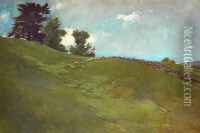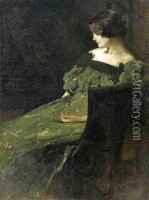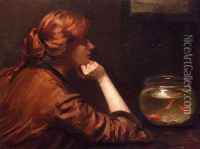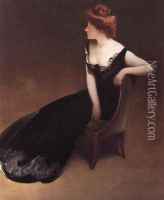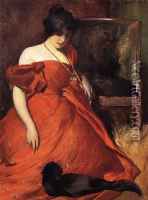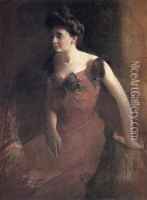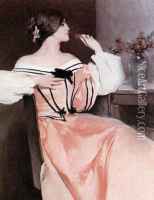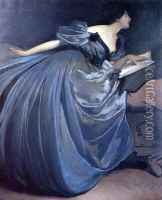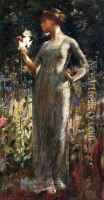John White Alexander Paintings
John White Alexander was an American painter and illustrator, born on October 7, 1856, in Allegheny, Pennsylvania, which is now part of Pittsburgh. He began his artistic career as a political illustrator in New York City for Harper's Weekly, after which he moved to Europe where he studied painting. Alexander spent significant time in Munich, Germany, and in Paris, France, where he was influenced by contemporary European art movements, particularly by the works of James McNeill Whistler and the tonalist style that emphasized mood and shadow.
In Europe, Alexander developed his own distinctive style, characterized by elegant figures, sinuous lines, and a muted palette, which was in line with the aesthetics of the Art Nouveau movement. He became renowned for his graceful depictions of women, often capturing them in contemplative or intimate moments. His portraiture was also highly regarded, and he painted numerous influential figures and society portraits.
Alexander returned to the United States in the late 19th century and became a prominent part of the art scene in New York. He was a founding member of the Ten American Painters, an artistic group that sought to break away from the constraints of the academic painting that dominated the American art world at the time. Through his involvement with this group and his own work, Alexander played a significant role in the development of American Impressionism.
Throughout his career, Alexander received numerous awards and honors, including a silver medal at the Paris Exposition of 1900, and he was elected to the National Academy of Design. He also served as the president of the National Society of Mural Painters and was a member of various other artistic societies.
John White Alexander's legacy includes not only his contributions to the American art scene but also his influence on the development of early 20th-century American painting. His work is held in several prestigious collections, including the Metropolitan Museum of Art in New York.
Alexander's life came to an end on May 31, 1915, in New York City. His death marked the loss of one of America's most refined painters of the turn of the century, whose work bridged the gap between European influences and the evolving American artistic identity.

